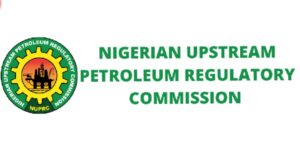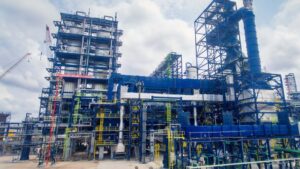
OPEC+ supplies market more crude, many members may lag behind
OPEC and its allies have set aside their differences for now, with their deal to hike crude production, but the coalition’s internal battles for market share are just getting started.
After two and a half weeks of wrangling, the OPEC+ alliance on July 18 agreed to pump 400,000 b/d more crude every month to cool off a potentially overheating market, while also granting five countries – Saudi Arabia, Russia, the UAE, Iraq and Kuwait – even higher output targets starting in May 2022.
It is a near-term win for the group but also one that looks set to exacerbate the divide between its richer and poorer members.
By late 2022, when the alliance expects to have fully unwound its 5.8 million b/d in collective production cuts, those five countries will have expanded their output considerably, while most, if not all, of the remaining members will struggle to keep pace, ceding market share in the process.
S&P Global Platts Analytics estimates that as of June, the alliance holds about 6.35 million b/d of spare production capacity — 590,000 b/d above the current OPEC+ cuts. Saudi Arabia, the UAE and Russia account for almost three-fourths of it.
The Saudi and UAE energy ministers were all smiles following the decision, telling reporters in an OPEC+ press briefing that they were unified in purpose and commitment to the group, but sources told S&P Global Platts that some delegations were extremely unhappy at the outcome.
One said it was especially galling for those countries that have fully complied with their quotas — and in some cases overcomplied.
“It is unfair for countries that do not have high production,” one delegate said on condition of anonymity. “We accepted this agreement to keep the group together, but we are legitimately disappointed because our efforts were ignored. In the end, not all countries are equal.”
Nigeria’s oil Minister, Timipre Sylva, voiced his displeasure in the OPEC+ meeting, as did Algeria’s Mohamed Arkab, multiple delegates said. Both countries are now appealing to the OPEC+ co-chairs, Saudi Arabia and Russia, for increased production allocations, as well, while Kazakhstan may also consider doing the same, the delegates said.
OPEC members Iran and Venezuela, both exempt from quotas as they grapple with US sanctions, could find it more difficult to win back customers in the face of heightened competition if the sanctions are ever relieved.
The task of holding the group together will fall to Saudi energy minister Prince Abdulaziz bin Salman and Russian counterpart Alexander Novak, as leaders of the coalition.
But if global oil demand keeps rising to the extent that the alliance expects, those dissatisfied countries may have little leverage as the market looks to OPEC+ for more supplies.
“If we progressively continue with the [400,000 b/d monthly increases], you will see some of these countries will not be able to achieve their numbers,” Prince Abdulaziz told reporters.
The comment was aimed at reassuring the market that the OPEC+ plan would not lead to a supply glut, but it illustrated the internal dynamics facing the group.
The coalition has been gradually rolling back its historic production cuts, from 9.7 million b/d in the worst of the pandemic last spring and summer, to the current 5.8 million b/d.
The deal came after a flurry of talks to resolve a Saudi-UAE impasse over the higher production baseline levels, from which quotas are determined, that had stalled an agreement since the start of the month.
The UAE has made substantial upstream investments in recent years and had forcibly complained that it was bearing an unfair burden of the OPEC+ cuts, based on the percentage of its production capacity it has been forced to keep offline, compared to other members.
Saudi Arabia had rebuffed the UAE’s request, wanting to hold the line on output baselines to preserve unity and prevent other members from also asking for more generous quotas.
The stalemate had left traders weighing the prospects of an overtightened market due to OPEC+ paralysis that keeps the existing cuts in place or a devolution into a pump-at-will free-for-all.
The two sides settled on a 332,000 b/d boost to the UAE’s reference production level starting in May 2022. But Saudi Arabia and Russia were also granted 500,000 b/d baseline increases, while Iraq and Kuwait will get 150,000 b/d rises, in a compromise.
The deal also extends the OPEC+ supply management pact to the end of 2022, from its previous expiry of April 2022.
“The UAE’s demand sends out a warning signal that the producer group will face a tricky balancing act to mutually satisfy its own members as well as the wider market next year, after a successful 2021,” said Tamas Vargas, an analyst with brokerage PVM Associates.
After the meeting, UAE energy Minister Suhail al-Mazrouei was unapologetic for seeking more license to pump.
“Those countries that are investing in their facilities and their production have that right,” he said. “That right is available to every country. Algeria, Nigeria, they can go through the process. As long as we have this capable management in the group, we can always reach a consensus fair to everyone.”
Prince Abdulaziz said OPEC+ meetings always involve deft diplomacy, which he called “an art” best left for closed-door discussions. But he also warned not to write off the alliance.
“I am a believer of OPEC+,” he said, “OPEC+ is here to stay.”



